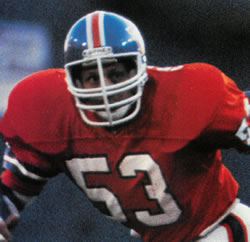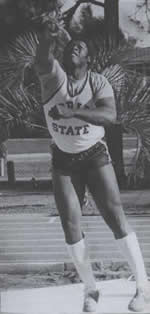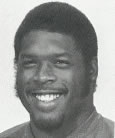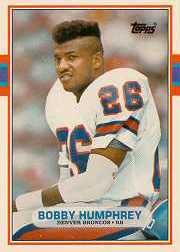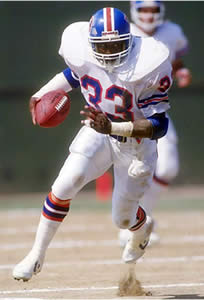 KNOW YOUR 1980s DENVER BRONCOS
KNOW YOUR 1980s DENVER BRONCOS
This week, #49, Dennis Smith.
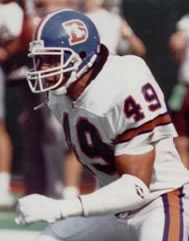 The Broncos selected Dennis as their first round pick (15th overall) in the 1981 draft, and he went on to become one of the greatest safeties in team history. Dennis became a starter in his second year and remained an anchor in the Broncos’ secondary until his retirement following the 1994 season. He developed a reputation as an extremely hard hitter and was feared by all rational offensive players. He was voted to six pro bowls and four all-pro teams during his career. Dennis recorded over 1,000 tackles for the team, making him one of the all time team leaders (tackles were not officially or consistently recorded for most of his career). He also is among the all-time team leaders in interceptions and fumble recoveries, and is behind only to John Elway, Jason Elam, and Tom Jackson in total number of games played for the Broncos. Dennis was inducted into the Broncos’ Ring of Fame in 2001. He’s also considered one of the great players in USC history, but I don’t hold that against him.
The Broncos selected Dennis as their first round pick (15th overall) in the 1981 draft, and he went on to become one of the greatest safeties in team history. Dennis became a starter in his second year and remained an anchor in the Broncos’ secondary until his retirement following the 1994 season. He developed a reputation as an extremely hard hitter and was feared by all rational offensive players. He was voted to six pro bowls and four all-pro teams during his career. Dennis recorded over 1,000 tackles for the team, making him one of the all time team leaders (tackles were not officially or consistently recorded for most of his career). He also is among the all-time team leaders in interceptions and fumble recoveries, and is behind only to John Elway, Jason Elam, and Tom Jackson in total number of games played for the Broncos. Dennis was inducted into the Broncos’ Ring of Fame in 2001. He’s also considered one of the great players in USC history, but I don’t hold that against him.
He played in Super Bowl XXI, in which the Broncos were pummeled by the New York Giants 39-20, Super Bowl XXII, in which the Broncos were pummeled by the Washington Native Americans 42-10, and Super Bowl XXIV, in which the Broncos were pummeled by the San Francisco 49ers 55-10.
So what makes Dennis Smith so awesome? Like his protege Steve Atwater, Dennis was a fantastic combination of power and speed that recent Broncos teams have sorely lacked. Dennis also deserves Hall of Fame consideration, but has never seriously gotten it as a safety with low interception numbers playing for an unglamorous western team. (Yes, I believe there is an East Coast bias in sports journalism.) Further, he played his entire career with the Broncos and is one of the better options for defensive players to control in Tecmo Super Bowl.
These days, Dennis lives in southern California and owns several properties there. In lieu of opposing running backs, he attacks the needs of children by donating his time and money to the Make-A-Wish Foundation and Covenant House.
